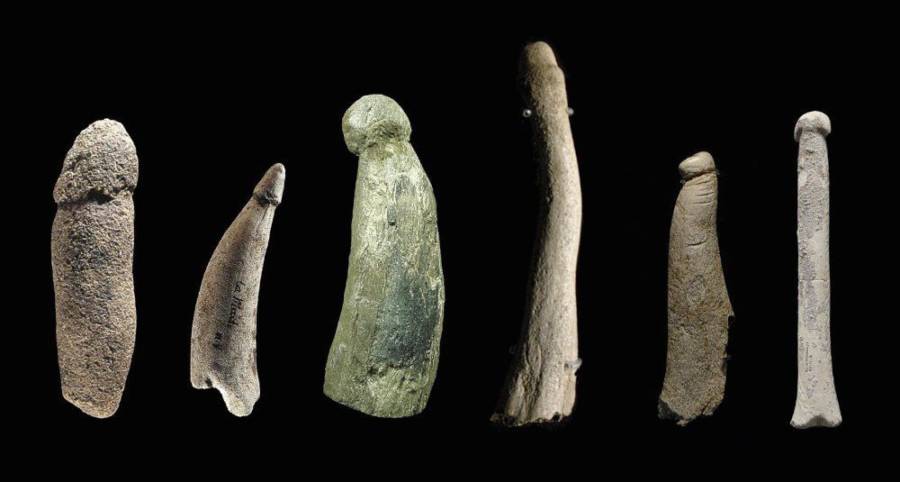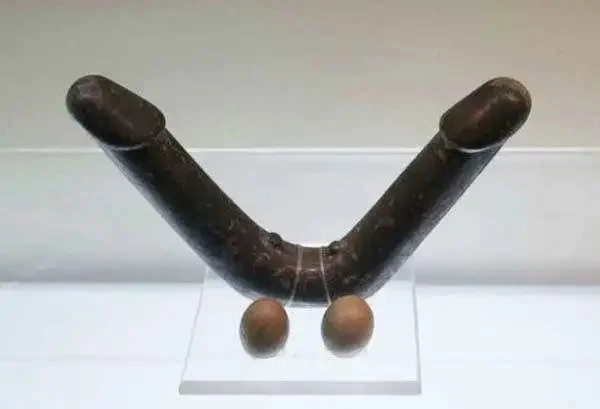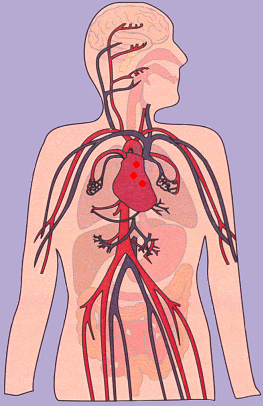10 Facts About Masturbation History
- Elexus Jionde

- Apr 22
- 6 min read
It may seem like masturbation isn’t controversial, but it is! The activity has influenced politics, society, medicine, and culture for most of history. Why has masturbation been so taboo? Why is it important? How have historical views on masturbation impacted approximately 80% of American penises? Keep reading to find out!

Masturbation is likely as old as sexual intercourse
There are works of art from 3000 BC onward depicting dildos. A 28,000 year old sculpted phallus was discovered in Germany in 2005, and is theorized to have been a multi-tool or a sex toy, clocking in at a somewhat impressive 7.8 inches. In some versions of the Egyptian creation myth, the God Atum created the universe by masturbating. Egypt was the most important civilization in the Mediterranean for approximately 3,000 years and central to it’s empire was the Nile River— because it provided transportation, food, and water. It was super important to Egyptians that the river never run dry. Ancient Egyptian pharaohs were alleged to participate in fertility festivals, in which crowds of people would watch as the pharaoh masturbated into the water. Other men would follow when the pharaoh was finished. This festival is contested among historians, but even if not true, the legend demonstrates the historical importance attached to semen via urban legend. Sperm vitality plays an important role in the history of masturbation. The Ancient Greeks and Romans were generally okay with masturbation, especially when a man had no other outlet, though they also believed that too much male sexual activity could weaken the body and stunt growth.
Female pleasure has been under scrutiny since as early as the 4th century.
Women were believed to be in danger of excessive independence and being unable to enjoy sex with men if they masturbated. In the 4th century, the influential Saint Jerome called women sexually insatiable, saying that when you “quench their passion, it immediately bursts into flame again.” As detailed by Geoffrey R Stone in Sex and the Constitution: Sex, Religion, and Law From America's Origins To The Twenty-First Century, some medieval observers warned that the innate sexual insatiability of women might drive them to use dildos. An 11th-century Catholic bishop insisted that women be interrogated on whether or not they had used “a device in the form of the male sexual organ, the dimensions being calculated to give you pleasure.” In the 13th Century, women who used “erotic devices” did penance for a year.
Many cultures believed ejaculation would affect vitality.

A key belief within Taoism is seminal vitality, and that semen must not leave the body, but be reabsorbed to nourish the brain. While a man is encouraged to have sex, "he must not orgasm if the life force is to be preserved.” A similar belief about sperm vitality is key to early Judeo-Christian beliefs as well.
Dildos in their earliest iterations were made of wood, leather and potentially even bread.
By the 16th century, specialty dildos were being made in the west using ivory and silver and they were being mentioned in English and Italian texts. Wrote John Marston in his Satires of Elizabethan England,
[She scorns] her husbands Luke-warme bed
Because her leisure being hurried
In isolating coach, with glassie instrument,
Doth far exceed the patina blandishment [aka coitus]
Basically, the glass dick was more appealing than sex with her husband.
In France, there is an ivory and wood dildo fitted with a plunger for ejaculation dated from the 18th century— and it was found not in a brothel or family home, but a convent.
Vibrators were originally created to correct nervous problems in Men and Women.
By the time of the progressive era in the early 1880s, the first vibrator was patented to treat nervous problems in men and women. The British doctor who invented it, J. Mortimer Granville, “instructed doctors to use vibrators to increase sexual power in their male patients by vibrating the perineum.” It was then used as a cure for hysteria and mania on women under medical supervision by the doctors themselves, giving male control over this experience— which probably wasn’t all that pleasant. By the dawn of the 1900s, after doctors began turning their noses up at the devices, these vibrators would be advertised in newspapers as consumer appliances that could cure a variety of ailments.
Some of your favorite euphemisms for masturbation date back to as early as the 17th century.
There were a lot of funny ways to say masturbate, including the similarly violent “beat the bishop”, “choke your chicken”, “paddle the pickle”, and “pound your pork”. Don’t these sound super similar to the current popular term of “beating one’s meat?” There’s the 18th century “stretching one’s pipe,” and the sternly judgmental “genital pollution.” To “play with one’s self” emerged in an 1879 limerick. To masturbate someone else was to milk them, and had been in use since the 17th century, in connection with the 19th century milk-woman, sex workers who masturbated their clients.
Circumcision was originally recommended as a safeguard against future masturbation.
Circumcision among male babies prior to the 19th century was by and large utilized by Jewish people. But by the physician led anti-masturbation movement, circumcision was being recommended as a safeguard against masturbation in the future. Numerous doctors claimed to observe children younger than the age of two masturbating, which historian David Friedman points out in A Mind of It’s Own: A Cultural History of the Penis, made it not a problem of personal moral failing, but a physiological problem that could be corrected by surgery. In an 1896 instructive guidebook All About Baby, mothers were told that circumcision was “advisable in most cases” to prevent “the vile habit of masturbation.” During this period, some doctors would shoot babies and young boys up with cocaine before removing the foreskin. By the mid-20th century, the operation was much safer and administered shortly after birth. By present day, at least 80% of all American-born penises are circumcised.
The man who influenced the creation of Graham crackers was anti masturbation and erotic literature.

In the 1830s, Connecticut-born Sylvester Graham became a prominent opponent of masturbation and erotic literature. About orgasms he once wrote, “the body should undergo such excitement only a few times in its lifetime.” Graham’s mother had 17 children and his father was 72 years old when he was born. Along with his anti-masturbation views, Graham was involved in the temperance movement and promoted vegetarianism, which was his ultimate legacy as a diet reformer. Meats, sugars, spices, and alcohol were alleged to be too exciting, that they would arouse people, especially the young and naive, to masturbate. Grahamite living came to exclude any kind of comfort or pleasure by championing cold baths, hard mattresses, open windows, and a vegetarian diet that somehow still allowed eggs to be eaten.
Media has helped shift the perception of Masturbation on a large scale.
In the 1998 Season 1 Episode 9 of Sex and The City titled The Turtle and The Hare, a generation of women were introduced to a vibrator named the Rabbit, which originally debuted in 1984. It’s significant that the show’s most conservative character used it. She actually becomes “addicted” and her friends stage and intervention to get her to quit. After that episode, the toy became a bestseller, its annual sales in the years following the Charlotte York promo jumping by 700%. In 2005, Eva Longoria, then a huge star in Desperate Housewives, mentioned, "I give Rabbit vibrators to all my girlfriends. They scream when they unwrap it. The best gift I can give them is an orgasm.” This comment boosted one online retailer’s sale of the toy by 30%. Sex and The City also showcased the Hitachi Magic Wand, in the 2001 Season 4 Episode 8 episode, My Motherboard, Myself, which due to a shortage saw prices at online retailers skyrocket 4x it’s usual price in the early 2000s.
Masturbation has major health benefits for everyone!
Let’s face it, masturbation is great for several reasons. For everyone, it can help extend the years of sexual activity and libido and it can help you identify what you enjoy when you’re ready to explore with a partner. It can help you fall asleep. It improves blood flow, lowers heart rate, and blood pressure. For vagina owners, masturbation “protects against cervical infections by increasing the acidity of the cervical mucus and flushing out pathogens,” and for those trying to get pregnant, improves the chances of conception. For penis owners, masturbation flushes out low motility sperm, again increasing the chances of conception. For those who orgasm too quickly during sex, masturbation can help delay premature ejaculation. Masturbation also, most notably, has been linked to reducing the risk of of prostate cancer. Its not masturbation itself the does the job, but rather— ejaculation. In an 18-year study, “researchers found that guys who did it the most (at least 21 times a month) had about a 20% lower chance of prostate cancer, compared with those who did it less (4 to 7 times a month).”







































.png)
Comments